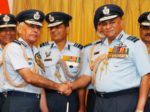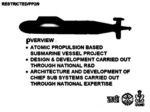China on my mind
The fortnight-long controversy over Chinese intrusions across the Line of Actual Control (LAC) has brought out three issues. The first is the propensity for intrusions on both sides of the hazy frontier, the second, the absence of a coincident approach towards China within the Indian government and third, the deficiencies in the Indian defense of its eastern frontiers.
Intrusions across the LAC are almost run-of-the-mill and both sides are guilty of them, usually by error and sometimes by design. This is usually caused by the lack of a defined boundary between the two countries over large areas. With large swathes of the vague border left unpatrolled and unmarked, intrusions by error are bound to happen on both sides. This is not to say that there haven’t been reports of creeping intrusions by the PLA (People’s Liberation Army) or that all intrusions are because of navigational error. Intrusions are indeed also sometimes used as a device to send a message to the other side.
The media hype to which the National Security Adviser Mayankote Kelath Narayanan has referred has been caused by the lack of understanding of this by large sections of India’s media, the lack of proper communication by the Indian government with the media and the lack of a unified message put out by the different ministries and agencies of the Indian government. The government must share the blame for the intermittently confused messages coming from news media reports. News reporting would have been far more lucid if lines of communication between the government and the media were on more solid ground and not subject to obscure leaks by different officials from different ministries, agencies and departments with differing agendas. While it is true that the reporting on this issue by some media left much to be desired, with many getting far ahead of themselves, it is also true that, while subjected to the Chinese criticism that the Indian Army seemed to endorse a little too quickly, India’s vibrantly free media dug up many issues of relevance to national security.
For one, it has certainly become clear that the Indian government does not speak with one voice on China, even though it may be of the same mind. This has lead to the existing varying views about the approach to China between the Ministry of External Affairs, the intelligence agencies and the armed forces being manifested in leaks to the media, leading to a confused message to the country. And not only has the Indian government failed to stay on message, it has failed to deliver the message properly by omitting any substantial communication on the issue. The government’s sorry excuse for public diplomacy and advocacy has been epitomized by a statement calling India’s eastern frontiers most peaceful, made by the Indian Foreign Minister Somanahalli Mallaiah Krishna, considered by some to be verging on Shivraj Patil* 2.0. It is no secret that the Indian Foreign Service and the Indian armed forces think differently on China, and indeed many other issues, because of their training, tradition and outlook. This often becomes apparent when foreign secretaries speak their mind. India’s intelligence agencies have their priorities too. And virtually all of them have divergent views within their organizations as well. While this is not necessarily bad for brainstorming on policy, it does no good to have public diplomacy and state action reflect these divergent views and send out a disarranged message. After deliberations, any course of action should become the objective of the foreign service and armed forces without deviation from the message. This naturally implies the existence of a single devised message.
Perhaps, if this is how diplomacy is being conducted, it may be one of the reasons why the Sino-Indian border resolution talks have not come to fruition. The lack of government discourse to the public on the status of these talks have also perhaps led to thirteen rounds with no result, not counting the earlier rounds in the 1980s. While diplomacy over the demarcation of a 4,057 kilometer-long line requires patience, the talks themselves seem to have become self-perpetuating, being interspersed with occasional skirmishes, which apparently retard progress on a settlement. The ambiguity of the Chinese on the recognition of Sikkim as a part of India, the attempted sly perfidy over the International Atomic Energy Agency (IAEA) sanction to nuclear trade with India, Chinese media reports’ reference to Hindu terrorists having perpetrated the 26/11 attacks and of the Chinese Navy forcing an Indian submarine to surface, the attempted stonewalling of an Asian Development Bank loan to benefit Arunachal Pradesh and the recent Chinese media reports wagging fingers at India over the force accretion in the northeast have all failed to help matters.
But India too has quietly replied by way of military as well as public diplomacy, standing fast on the opening of Advanced Landing Grounds (ALG) to service the eastern frontier, raising additional divisions and increasing the deployment of air assets for the northeast. Not to mention, reiterating the Dalai Lama’s freedom to travel anywhere in the country, including Arunachal Pradesh.
The often-frenetic reporting by the media over the past two weeks has thrown up these issues for public scrutiny at a time, when public attention barely acknowledges the existence of India’s problems with China, except on the rare occasions when a navy chief speaks his mind. It has become apparent that the border between India and China is unlikely to be properly demarcated to the agreement, if not satisfaction, of both sides any time soon. It is also common knowledge that Indian forces, while maintaining an offensive stance on the western borders with Pakistan, have been on the defensive on the frontier with China since the war of 1962 (Indeed, the prospect of a war on both fronts, however remote, is something military planners in India are uncomfortable about acknowledging). This is a result of the inability of Indian forces to match the Chinese, with Indian infrastructure in the eastern sector barely comparable to that on the Chinese side, leaving the Indians handicapped by terrain and making the border regions difficult to patrol and monitor because of restricted mobility and basing. Movement by ground and air is subject to the few roads communicating with the borders and the unpredictable weather. Indian troops are hamstrung by the Hobson’s choice of moving to forward posts either on foot or by pack animals and are often being unable to monitor vast areas of the border. While the National Highway network barely touches Arunachal Pradesh, there are also no major roads going up to the border districts.
Conversely, China has the advantage of the easier terrain of the Tibetan plateau, in contrast to the difficult topography that soldiers on the Indian side have to patrol, which includes jungles and mountainous regions. This has also allowed China to surge ahead in terms of infrastructural development. China has plans to extend the Lhasa railway to Chumbi valley on the border with Sikkim, Nyingchi on the border with Arunachal Pradesh and thence to Yunnan province. This will enable the PLA to deploy troops rapidly throughout the region. China has also established an airlift capability with a capacity ranging from battalion strength to a division, according to some reports. In fact, the PLA practiced exactly this in their exercise Stride 2009 held last month, in which some 50,000 troops were reportedly mobilized over long distances by high-speed rail and air. In contrast, the Indian Railways’ network is yet to enter Arunachal Pradesh, Sikkim or Ladakh.
Infrastructural development in the border regions has traditionally been seen in India as something that could someday aid an enemy invader. Slowly, this supremely insecure and ultra-defensive mindset is undergoing a change, with approval given to road projects in Arunachal Pradesh worth more that US $ 2.5 billion. The Minister of State for Defense, Mallipudi Mangapati Pallam Raju announced the planned construction of the trans-Arunachal highway last month. Prime Minister Manmohan Singh had announced a road project to link all sixteen district headquarters of the state in January 2008, which was cleared by the Union Cabinet a year later, last January. The 1,412 kilometer-long trans-Arunachal highway will inter-connect 11 district headquarters and a further 847 kilometer-long two-lane road will connect to the remaining five district headquarters, besides improving connectivity in Assam as well. The Ministry of Defense has also indicated that the Border Roads Organization (BRO), the premier road and highway building and maintenance organization in the frontier regions, would begin contracting private vendors to airlift supplies and materiel to project locations in the remote, border regions of the country, where deliveries on the ground are difficult.
The Indian government has also inched towards giving the state access to railways, with a 22 kilometer-long line to the capital Itanagar. This project, worth US $ 19 million, began last October and is scheduled to be completed by 2010, 63 years after India became independent. While a start, this measure is barely relevant because, unless railway links are extended closer to the border areas, they will remain strategically insignificant. Quite pathetically, the Governor of Arunachal Pradesh and former army chief General Joginder Jaswant Singh was forced to ask the then Union Railway Minister Laloo Prasad Yadav for toy train locomotives to be installed in public places in the state so the people could at least see what a train looked like. Last heard, a toy train was to be installed on tracks running around a football ground.
Ladakh, although with an area a little larger than Arunachal Pradesh, is better off because of it being serviced by National Highway 1 and having a good network of roads along the Indus, Stod and Shyok rivers, even going up to the lake, Pangong Tso, control over which is divided between India and China. In fact, there is also a territorial dispute over a section of the lake. National Highway 1 is especially important and so looked after because of its vulnerability to Pakistani artillery across the Line of Control, as was evident during the Kargil War. The Indian government has decided to build a more reliable second approach to Ladakh by upgrading the Manali-Leh road to especially remove the vulnerability of the Rohtang Pass to weather shutdowns by building a tunnel. While the Indian railway network hasn’t reached Ladakh, the Indian Air Force (IAF) has been quietly but aggressively conducting an upgrade of the aviation infrastructure in the region, with airfields being made serviceable. An IAF AN-32 landed at the third airfield to be so activated on the border at Nyoma on Friday, improving the Indian airlift capability in that area. Airfields at Daulat Beg Oldie, which is just south of the Karakoram Pass, and Fukche have already been made operational and the airfield at Chushul may also be reopened for business.
But the Indian armed forces, border police and paramilitaries, remain under-equipped in comparison to Chinese forces on the other side. As it is, there is a caste system that dictates resource and equipment allocation to the army on one hand and the paramilitary forces on the other. Consequently, the army is better served in terms of the equipment, mobility, gear, and even the special clothing for the extreme conditions in the eastern Himalayan regions, while the troops of the Indo-Tibetan Border Police (ITBP) serving at the same location as the army, are asked to do with less and worse.
Secondly, the Indian Army’s and IAF’s specific capabilities in the northeast and Ladakh are only just beginning to see the required accretion in terms of both manpower and weapons and equipment. Armored units have been deployed in Sikkim and the IAF has landed Sukhoi-30 MKI aircraft at Tezpur and also plans to do the same at Chabua, also in Assam. The Indian Army is raising two divisions with the objective of force accretion in the northeast. Weapons and equipment are also in the process of being modernized and the big ticket armament acquisition here is artillery, even though the acquisition process is facing hiccups due to a corruption inquiry. The army’s existing battlefield surveillance radars are long past their prime and are not meant for border surveillance. As it is, since even formidable radar coverage and reconnaissance aircraft can have limitations in mountainous terrain, the IAF also uses Mobile Observation Flights. These are two-man units trained to spot aircraft by sight or sound from the ground. They can be deployed for extended periods of time as observers either by vehicle or by foot or pack animal in difficult terrain where the threat perception requires such deployment.
While on its own the Indian armed forces are doing what is required, it is the Indian government that collectively needs to get its act together and implement the rapid construction of infrastructure, to be able to negotiate with China from a position of strength and equality for achieving the objective of a settlement on the demarcation of borders.
* Shivraj Patil was India’s Home Minister when the 26/11 attacks in Mumbai took place. He was asked to quit soon after being castigated by the news media for ineptitude in handling the crisis and is also remembered for changing his sartorially immaculate attire three times on the evening of the terrorist bomb blasts in New Delhi on September 13 last year. He was fond of telling journalists to read the Constitution, specifically the part which designates the maintenance of law and order to be the responsibility of the state governments, when sometimes queried on issues pertaining to crime, law and order.








Congrats. Its brilliant.
- SKJ